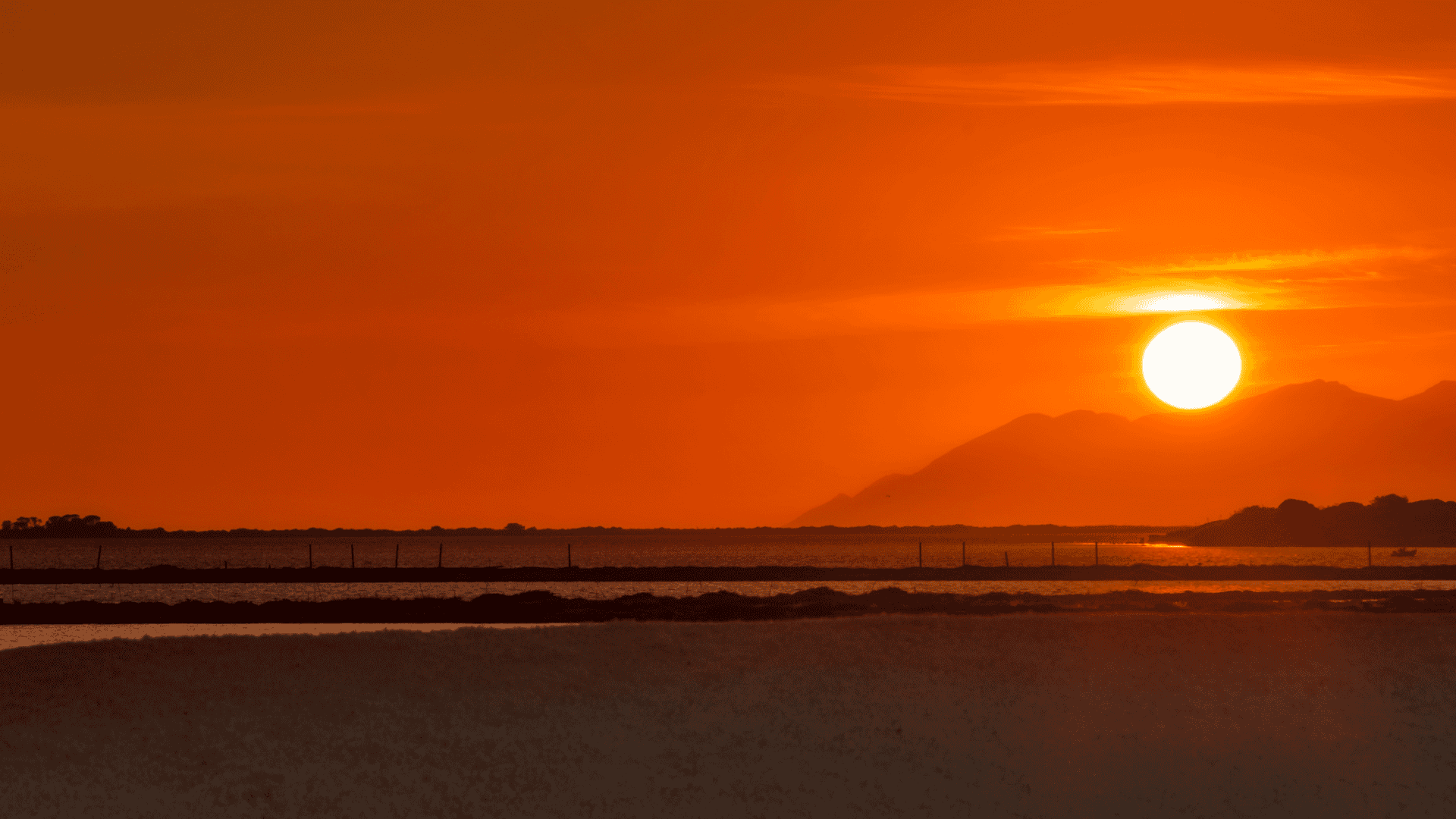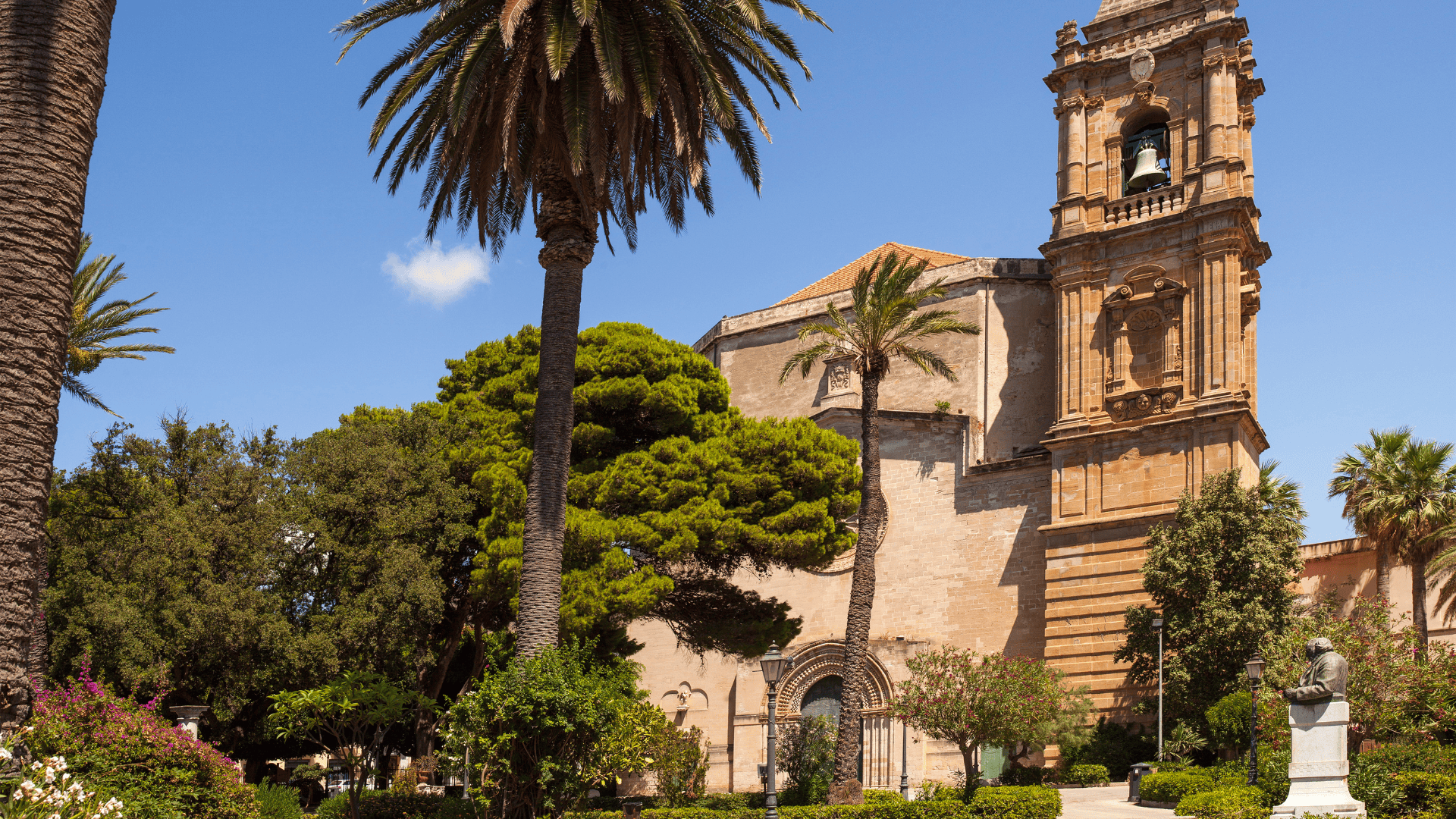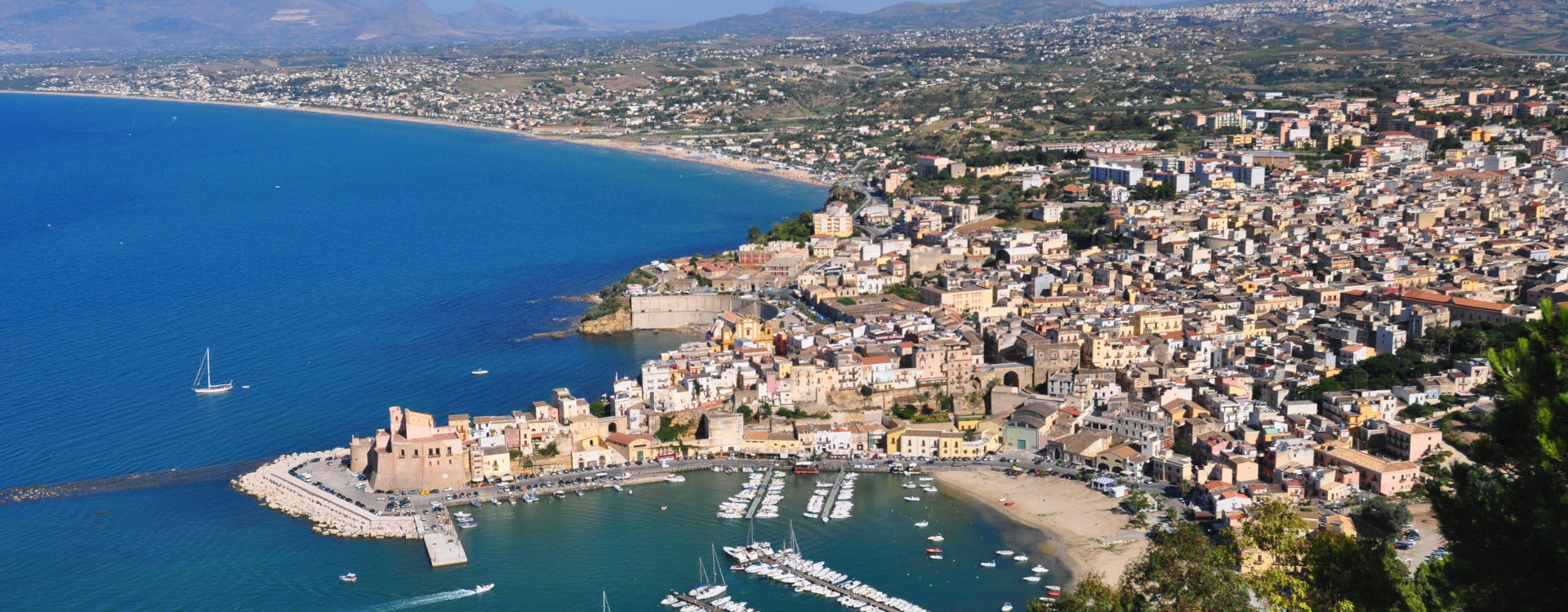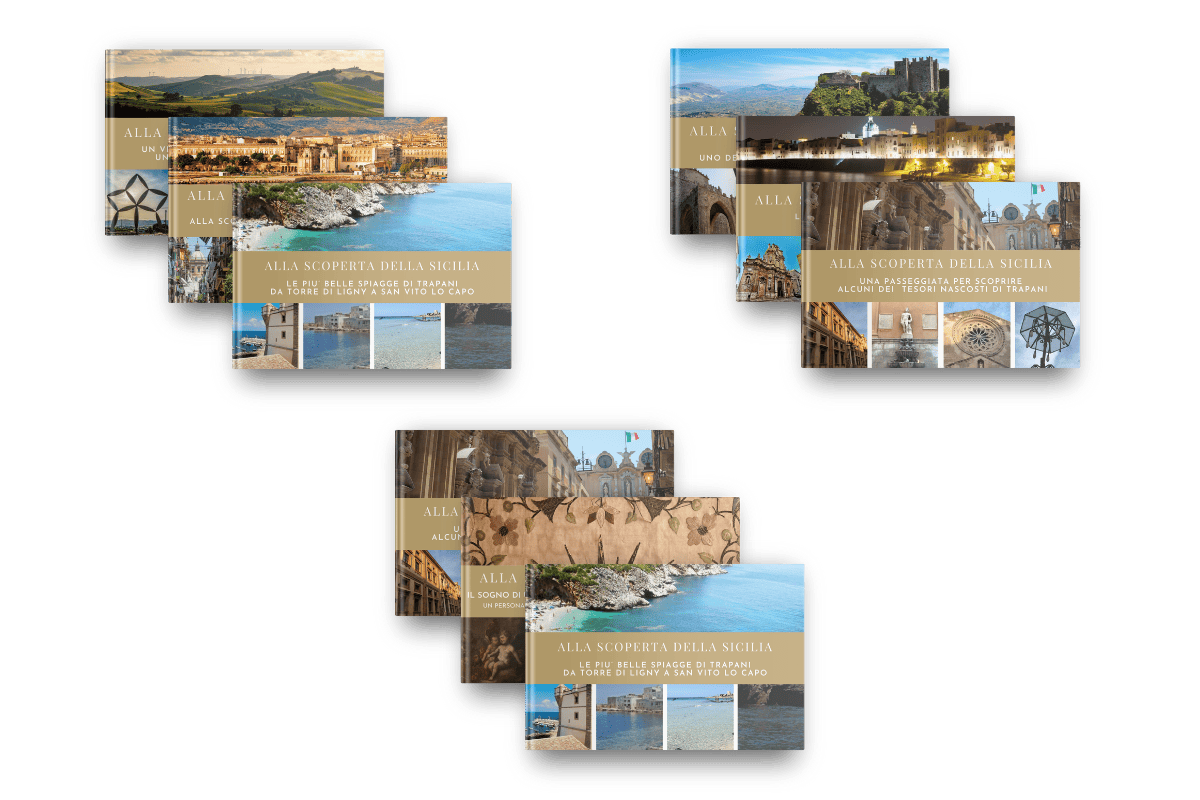What to see in Palermo in One Day
Palermo, 'Capital' of Sicily
Palermo is a multifaceted city, its long history rooted in prehistory.
Phoenician city, then Greek and Roman, Arab capital and then land conquered by the Normans, the French and the Spanish.
This incredible history is still recognisable, its street layout, the scents and smells that fill its markets, the street food, the voices and shouts that enrich the walk with incredible sounds.
We at Giardini MonPlaisir suggest that you spend at least a day discovering Palermo, we suggest an incredible route, exactly the one that the distinguished guests of Kings and Viceroys used to take when they landed in Palermo to reach the Royal Palace.
Porta Felice
It represents the monumental entrance from the sea to the Cassaro, the ancient main street of the city. From here the long processions for the arrival of ambassadors in the city began, and the Cassaro thus became an artery full of monumental palaces.
A few steps from Porta Felice you can see the Passeggiata delle Cattive and the Palazzo Butera, one of the city’s most beautiful palaces with a magnificent terrace overlooking the sea.
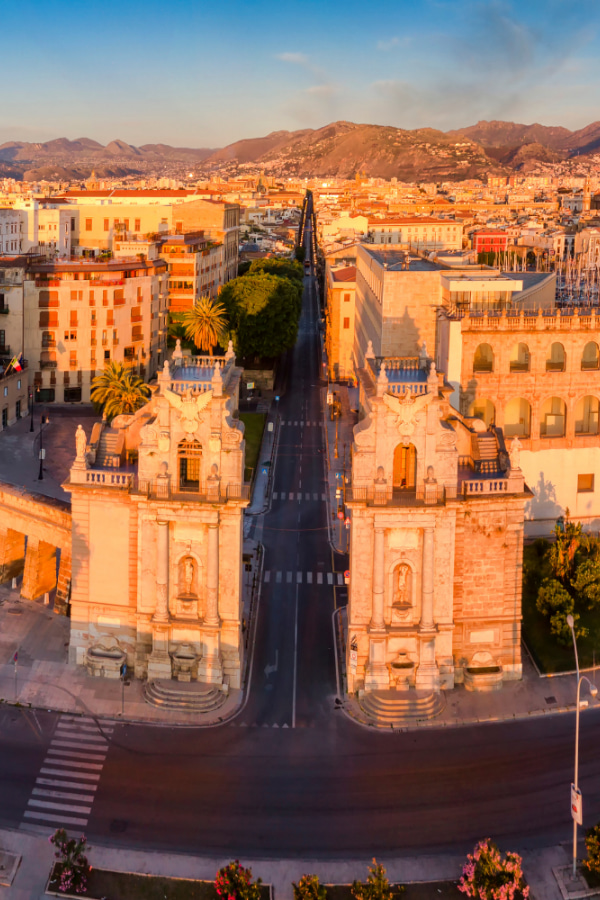

Porta Felice
It represents the monumental entrance from the sea to the Cassaro, the ancient main street of the city. From here the long processions for the arrival of ambassadors in the city began, and the Cassaro thus became an artery full of monumental palaces.
A few steps from Porta Felice you can see the Passeggiata delle Cattive and the Palazzo Butera, one of the city’s most beautiful palaces with a magnificent terrace overlooking the sea.
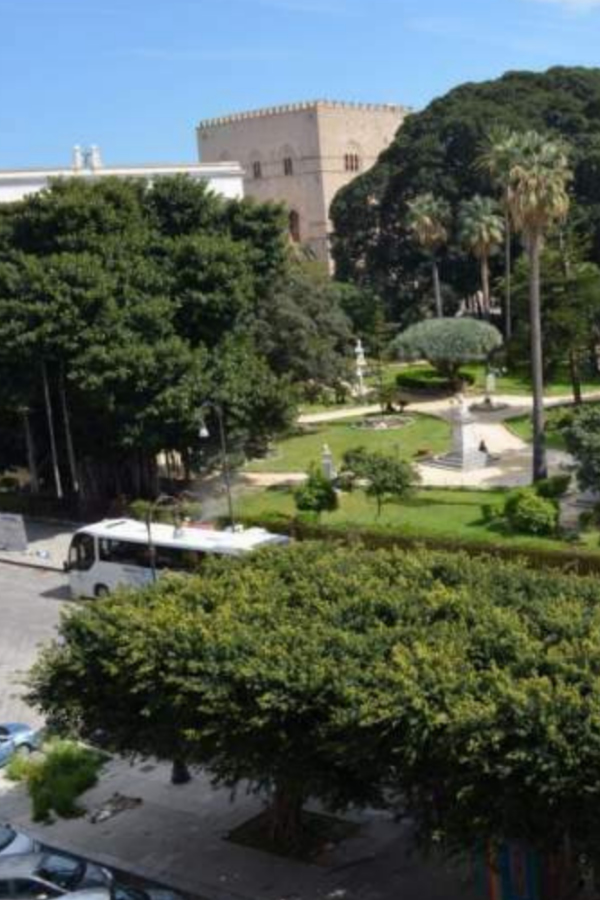
Piazza Marina
A square truly rich in history, which is well represented by each of the buildings and urban elements that make it up. Piazza dello Steri, formerly Palazzo Chiaramonte and later the seat of the Holy Inquisition, there used to be a guillotine here until the end of the 19th century when it was decided to enrich it with a public garden with monumental ficus trees.
A few steps beyond the STERI, there are Palazzo Abatellis (the oldest noble palace in the city), Palazzo Mirto (house-museum of a noble family from Palermo), Via Alloro with its ancient noble palaces and Baroque churches.
I Quattro Canti di Città
When the axis perpendicular to the cassaro (Via Maqueda) was built at the end of the 16th century, which was to become the main axis of the city along with the previous one, it became necessary to enrich the intersection with a large square, the QUATTRO CANTI or the TEATRO DEL SOLE. Four Baroque decorations are enriched by the light of the ‘Sun’ throughout the day.
A few steps from here, Palazzo delle Aquile with the Pretoria Fountain, the Martorana Church, Piazza Bologni with its sequence of Baroque palaces
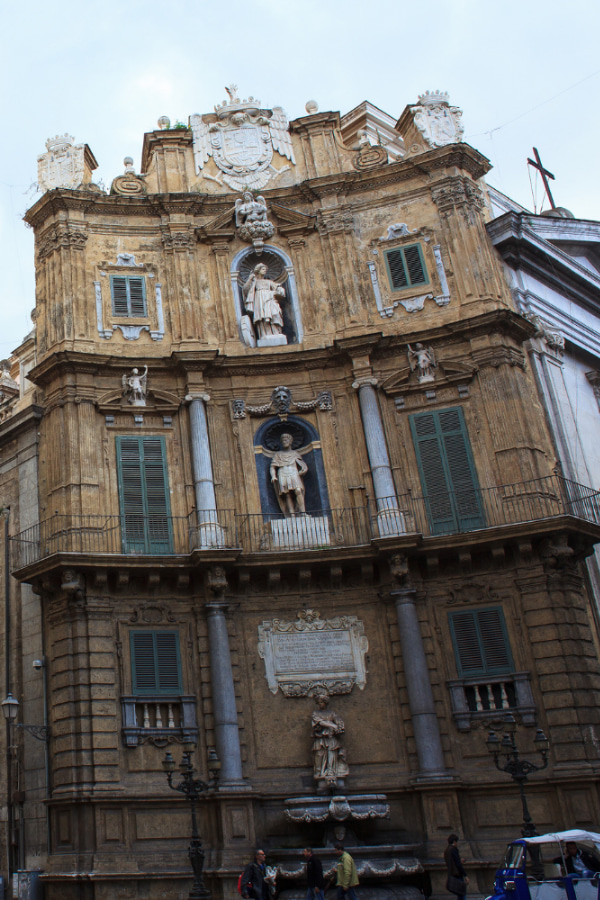

I Quattro Canti di Città
When the axis perpendicular to the cassaro (Via Maqueda) was built at the end of the 16th century, which was to become the main axis of the city along with the previous one, it became necessary to enrich the intersection with a large square, the QUATTRO CANTI or the TEATRO DEL SOLE. Four Baroque decorations are enriched by the light of the ‘Sun’ throughout the day.
A few steps from here, Palazzo delle Aquile with the Pretoria Fountain, the Martorana Church, Piazza Bologni with its sequence of Baroque palaces
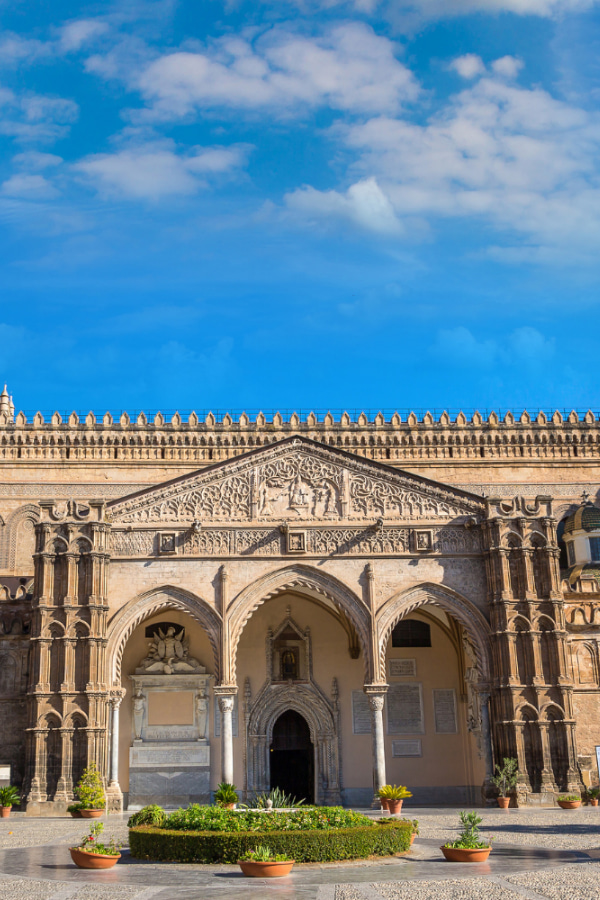
La Cattedrale
There is a succession of epochs to represent the succession of peoples who have left tangible traces in the city’s main monument. The Norman area with the crypt and the royal tombs are still visible. Built on the Cassaro, it is one of those monumental works that immediately showed the visitor (directed by the Cardinal or the King) the power and wealth of the city.
Palazzo dei Normanni
The oldest royal residence in Europe, this palace represents the succession of dominations this city has undergone.
Built in the 10th century on the foundations of the ancient Phoenician city by the Arabs, it became the nerve centre of the Norman kingdom.
Inside, you can visit the Palatine Chapel (symbol of Arab-Norman art) as well as the 16th century Hall of Hercules.
So have we convinced you? All you have to do is pack your bags and head for Trapani!
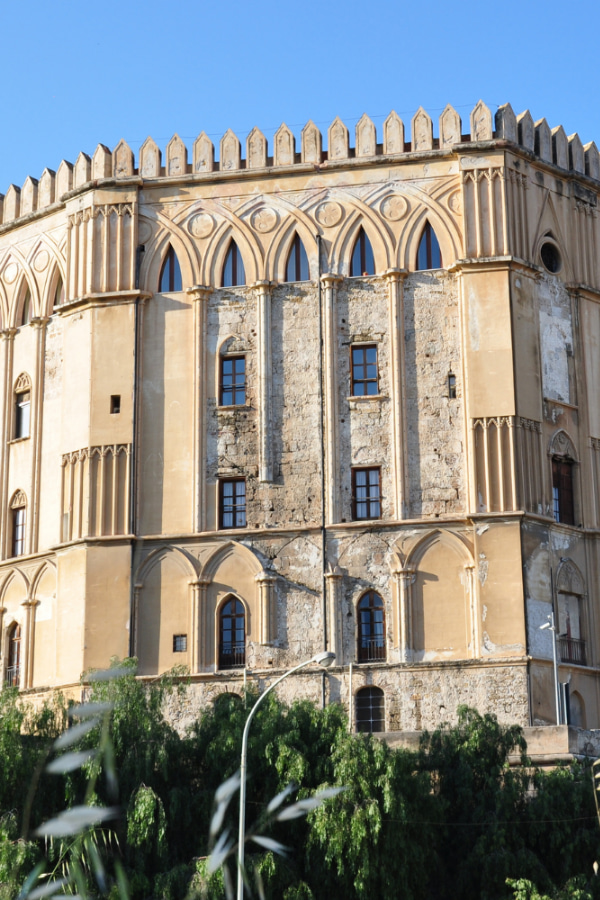

Palazzo dei Normanni
The oldest royal residence in Europe, this palace represents the succession of dominations this city has undergone.
Built in the 10th century on the foundations of the ancient Phoenician city by the Arabs, it became the nerve centre of the Norman kingdom.
Inside, you can visit the Palatine Chapel (symbol of Arab-Norman art) as well as the 16th century Hall of Hercules.
So have we convinced you? All you have to do is pack your bags and head for Trapani!


